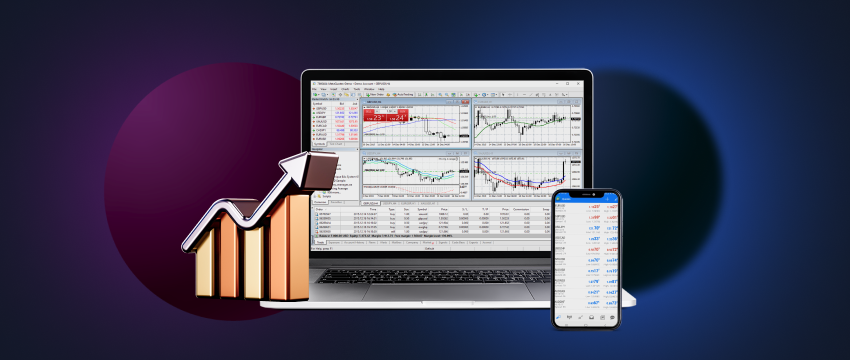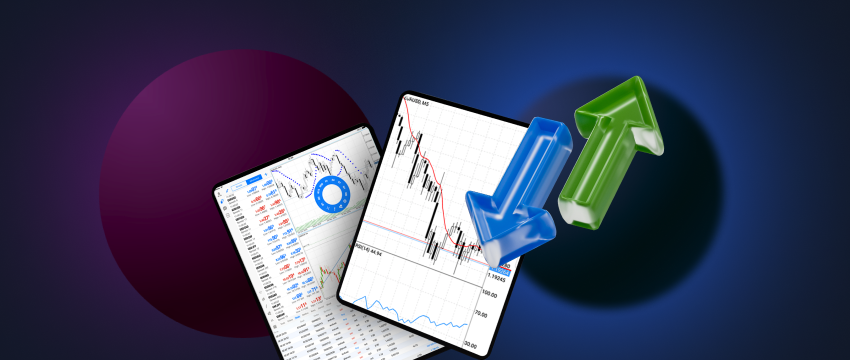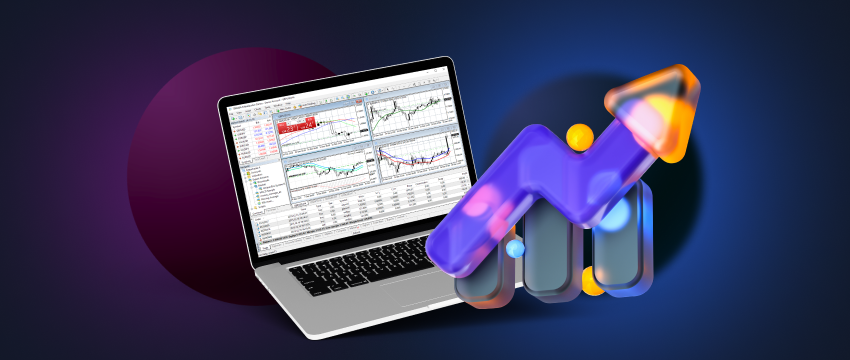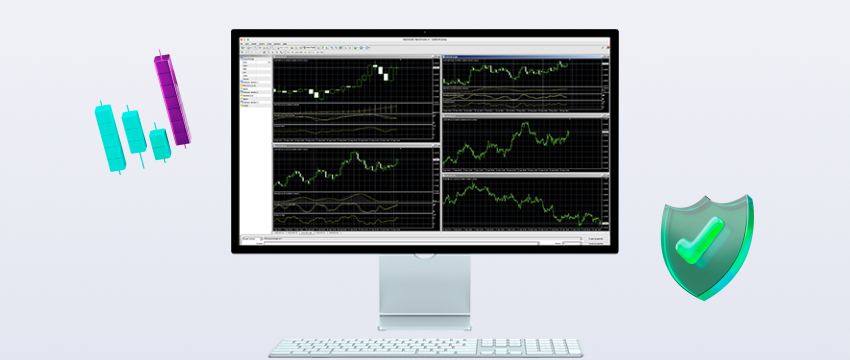Traders in a number of countries across the globe partake in CFD trading. Traders have embraced it as a prevalent way to diversify their portfolios and tap into a variety of financial markets. Interestingly, some even claim that search popularity on Google for the term “CFD trading” increased by 137% between 2012 and 2022.[Finder.com]
It’s not surprising that traders consider CFD trading appealing. As a highly leveraged financial derivative, it offers the potential to make massive gains. But, so too is the possibility for losing all of one’s money.
So, what about CFD trading makes it challenging, enough so that traders are likely to lose all their money? And what can be done to mitigate these challenges to increase your chances for profitable success? Let’s discuss.
Top reasons that make CFD trading hard
1. Mismanaging leverage
While one might consider leverage a powerful tool. To maximize potential profit, if managed ineffectively. It can have devastating effects. Leverage essentially involves borrowing funds that allow a trader to open larger value positions with limited capital. This offers the opportunity to amplify trading wins. And also increases trading opportunities.
However, improper management of leverage can cause severe losses, especially. If traders do not vigilantly monitor their trades. Trading can be highly volatile, and price movements of underlying assets can occur rapidly and/or unexpectedly. Consequently, a highly leveraged position moving in an adverse direction puts the trader at risk of losing their capital. This makes the need for effective risk management strategies incredibly important.
These typically include the use of stop loss and take profit orders to minimise loss or secure a specified amount of profit. Trailing stops and guaranteed stops are other ways that CFD traders endeavour to safeguard their funds.
Key takeaway: ensure you have a proper handle on leverage and implement risk management measures to protect your money.
2. Monitoring market volatilities
We cannot stress enough the influence that market volatility has on driving asset prices. And this has relevance in the context of CFD trading whereby a trader is speculating on how the underlying asset’s price will move. Not knowing how to monitor or understand volatility will likely have a detrimental effect on their speculation. There are many factors that create this market volatility. They include:
- إعلانات البنك المركزي
- economic releases
- market or investor sentiment
- interest or inflation rates
- a shift in industry trends
- unemployment rates
- evolving trade agreements
- geopolitical instabilities or war
- environmental disasters
Having to constantly be mindful of each item on the list above could be considered one of the challenges of CFD trading. However, traders can employ various methods to achieve this. Such as using an Economic Calendar. This type of calendar will assist you in tracking events, news and key indicators to better plan your CFD trades.
Key takeaway: make certain that you are cogniscent of global economic and political news and events. This will facilitate more accurate price speculation. It will also ensure that you are better equipped. To respond quickly to shifts in the market.

3. Engaging in technical and fundamental analysis
Not everyone finds analysis easy. In fact, it could be considered one of the more challenging aspects of CFD trading. This is because learning how to conduct both forms of analysis. Especially technical analysis, is fundamental to one’s trading success. It’s a skill that a CFD trader must learn in order to equip themselves. With as much data to make financial decisions. But what are technical and fundamental analysis? Let’s find out.
- Using technical analysis, a CFD trader will learn how to read and assess price charts. They will do this to try and identify particular price patterns and market trends. This is achieved by making use of technical indicators. Popular examples include Bollinger Bands, RSI (Relative Strength Index), MA (Moving Average), EMA (Exponential Moving Average, Fibonacci (Retracements), MACD (Moving Average Convergence Divergence), Stoch RSI (Stochastics), Support and Resistance, Ichimoku Clouds, and many others.
- Fundamental analysis on the other hand looks at the intrinsic value of an underlying asset. It makes use of things like earnings reports, financial statements, P&L , etc. It also considers economic news, central bank announcements. And other qualitative and quantative data.
Both technical and fundamental analysis are essential and have a part to play in entering and exiting trades. However, in the context of CFD trading, technical analysis is probably more widely used for making fast decisions. Afterall, speed and being quick-thinking are essential traits for a CFD trader to possess.
Key takeway: knowing how to conduct technical and, where necessary, fundamental analysis is without doubt one of the most important CFD trading skills. While maybe challenging to learn, they are so vital for executing trades more successfully.
4. Managing your CFD trading psychology
Adverse CFD trading decisions are often times attributed to emotive trading. This refers to feelings and emotions driving the execution of trades, rather than facts and hard data.
CFD trading is an activity that’s built on speed and efficiency. It requires someone with a thick skin, discipline, focus, and the ability to quickly think on their feet. It’s what makes CFD trading hard for a lot of people.
Having to make decisions in seconds or minutes can spike anxiety and mess with your trading psychology in ways that will see you lose money fast. Throw in unanticipated market fluctuations or price spikes, and levels of stress and fear peak exponentially. Making a trading decision in that moment is likely to have negative consequences. This makes managing your trading psychology key.

But how does one do this? How does a trader develop more resilience to the extent that they can cope with the challenges that CFD trading throws their way?
Risk management tools
- Ensure you’re integrating risk management tools into your CFD trading strategy. This will help mitigate the stress that comes with potentially losing all your money.
- Consider keeping a journal to record all your trades. Write down the reasons for your trading decisions. Make a note of the emotions that arose and what triggered them. This will help you build a history of trading behaviors that you can adjust, where needed.
Avoid the temptation to overtrade
- Avoid the temptation to overtrade. Make trading decisions that are rational and based on data derived from your technical or fundamental analysis. Don’t make your fear of missing out be the reason for making impulsive trading decisions. Always trade with caution. And consider taking a breather in the course of trading. Move away from your screen or device that you’re trading on and resume only once you’re calm and focused.
Ongoing learning process
- Engage in ongoing learning. Yes, make an effort to ensure your knowledge is current, and equip yourself with as much CFD trading related information as you can. In this way, you’ll likely make better informed trading decisions. This sentence is already in the active voice. If you’d like it rephrased or expanded upon, feel free to let me know!
Key takeaway: recognise that your emotions have the ability to influence objective decision making. Then take the steps to manage those emotions in a way that doesn’t result in adverse trading outcomes.

5. Picking the right CFD broker
Finally, another part of CFD trading that could be considered hard is picking the right CFD broker. There are so many that exist, choosing one that’s right for you can feel overwhelming. You want a broker whose aim is to see you achieve your financial objectives. And how the broker goes about it is key. Here are some of the ways:
- Offering educational resources to help you become a better trader (e.g., videos, podcasts, blogs, webinars, seminars, e-books, etc).
- Flexible trading conditions, with competitive spreads, multiple trading accounts to choose from, fast trade executions, and easy withdrawals and deposits.
- Dedicated customer support with a team that can help you in your spoken language for convenience and understanding.
- A wide range of assets so that you can trade according to your preference.
- An innovative and easy to use trading platform that caters to the needs of both beginner and seasoned traders.
Key takeaway: ensure you pick a broker that will help you navigate the complexities of CFDs. One that regulates, has a good reputation, and is well-versed in everything related to this form of trading.
إخلاء مسؤولية: هذه المادة هي لأغراض إعلامية وتعليمية عامة فقط ولا ينبغي اعتبارها نصيحة استثمارية أو توصية استثمارية. لا تتحمل T4Trade المسؤولية عن أي بيانات مقدمة من أطراف ثالثة مشار إليها أو مرتبطة تشعبيًا في هذا التواصل.




